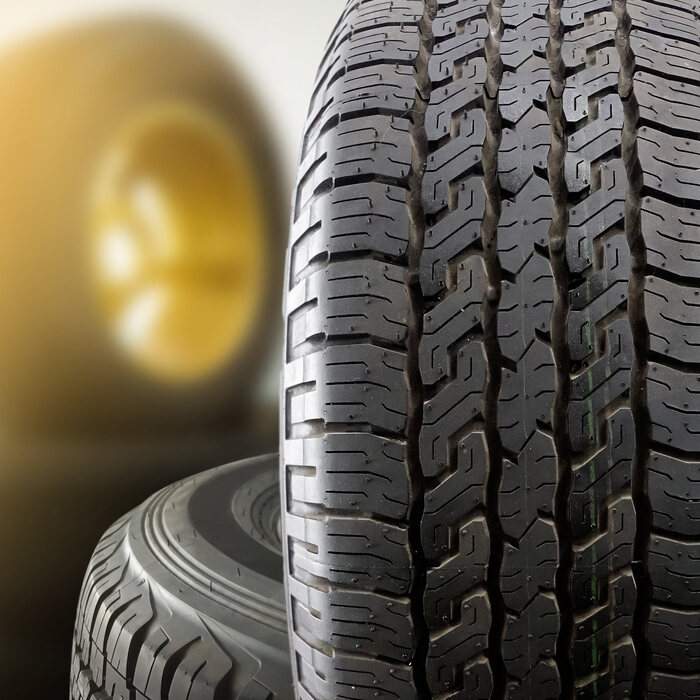HOW TO CHANGE A FLAT CAR TYRE SAFELY
Learning how to change a tyre is an important skill. Experiencing a flat tyre can be daunting, especially when it happens somewhere potentially dangerous, such as on the motorway or even a main road.
Having the knowledge to change a car tyre is crucial, as it can help you to do this yourself, and prevent having to call for roadside assistance.
Below is our complete tutorial for how to change a tyre:
Safety first
Before you begin, it’s important to remember the safety of yourself and other drivers.
When you realise that your car has a flat tyre, don’t panic. Continue to use your mirrors and signal before manoeuvring.
When stopping, try to ensure you’re doing so in a safe location, and not blocking roads or causing a potential hazard. If you’re on the motorway, use the hard shoulder, and use your hazard warning lights to alert other drivers.
Make sure you stop on solid, level ground, and that you’re not partially on the kerb, on an incline, or on gravel or soft earth.
The correct tools
You can never be certain that you’ll not experience a flat tyre (unless your car uses run-flat tyres, of course). For that reason, it’s recommended that you prepare for the eventuality that you will, at some point, get a flat tyre.
To do that you should, where possible, keep the following with you in the car:
- Spare tyre
- Vehicle manual/handbook
- Jack
- Wheel brace
- Wheel nut key
- Wheel chock
- Pressure gauge (this isn’t vital, but helps)
You should familiarise yourself with your handbook, as this will tell you where the jacking points are on your vehicle.
In the event of a flat tyre or breakdown, it’s also recommended that you carry:
- Warning triangle
- High-vis jacket
- Gloves
- Torch
Carrying the above will ensure you’re equipped to deal with a flat tyre yourself. Once you’ve pulled to the side of the road, you should wear your high-vis jacket - especially in dangerous situations such as the side of the motorway - and alert other drivers by placing your warning triangle 45 metres (147ft) behind the car.
If you switch between seasonal tyres, for example from winter tyres to summer tyres, you will also need axle stands that can support the entire weight of the vehicle. Changing all four tyres at once is not something we recommend you attempt yourself if you don’t have experience, so get in touch with Just Tyres and we can help you with this.
Step 0 - Before you begin
Before you begin changing the tyre, ensure your vehicle’s handbrake is firmly applied. You must also ask any passengers with you to leave the vehicle and stand in a safe location.
If you have gloves, it’s advised that you wear these as removing and fitting a tyre can be dirty, and rough on your hands.
Remove the spare wheel and tools from the boot and position these in a location where they’re not going to roll beneath the car, or into oncoming traffic.
Step 1 - Use wheel chocks
The first step prevents the vehicle from rolling while you’re changing the tyre. Chocks are small objects, usually triangular, that are placed snugly beneath the opposite tyre to the one being changed, to reduce movement. If you don’t have chocks, bricks can work in a similar way.
Step 2 - Loosen the wheel nuts
Before raising the car off the ground, loosen the wheel nuts. Do this by using the wheel brace and turning it anti-clockwise (remember the rule lefty loosey, righty tighty). Initially, you will likely have to apply a lot of pressure to loosen the nuts - placing your foot on the wheel brace and using your body weight can be a good way to do this. Don’t stand on the wheel brace with both feet.
Don’t loosen the nuts too far, just to the point where you can turn them by hand. You’ll remove them completely at a later stage.
Step 3 - Use the jack
As previously mentioned, your handbook will tell you where the dedicated jacking points of your vehicle are. Use the point closest to the punctured tyre.
Using a plank of wood beneath the jack will help stabilise the car on uneven surfaces.
Once you’re ready to raise the vehicle, do so as smoothly as possible. Aim to raise it around 100-150mm from the ground.
Step 4 - Remove the wheel nuts and the tyre
You can now fully remove the wheel nuts by continuing to turn them anti-clockwise. Once all wheel nuts have been removed, you will also be able to remove the wheel.
Slowly pull the tyre towards you. If the tyre doesn’t initially move, gently wiggle it. Try to avoid any jarring movements, and don’t yank.
Tyres are heavy, so be sure you’re prepared to take the weight once the wheel is free from the hub bolts.
Once removed, place the wheel flat on the ground away from the spare.
Step 5 - Attach the spare
Push the spare onto the hub bolts, which may require patience and stability as you line them up.
Use the wheel nuts you previously removed to secure the spare to the vehicle. At this stage, only tighten them by hand.
Step 6 - Lower the vehicle and use the wheel brace
Using the jack, lower the vehicle until the spare tyre makes contact with the ground, but isn’t yet fully supporting the full weight of the vehicle.
Then, use the wheel brace to tighten the wheel nuts as much as you can. At this stage, avoid standing on the wheel brace. As you’re low to the ground, ensure your legs don’t go beneath the car to avoid injury.
Step 7 - Let the spare take the weight
You can now fully lower the jack to allow the spare to take the weight of the vehicle. You should then once again check each wheel nut with the wheel brace to make sure they’re as secure as possible.
Step 8 - Check tyre pressure
If you have a pressure gauge, use it to check that the spare tyre is fully inflated. Your vehicle handbook will advise what PSI this should be.
If you don’t have a pressure gauge, you should be able to find one at a local petrol station (usually for a small fee).
Step 9 - Clear up
Make sure you’ve cleared up everything used during the process of changing your flat tyre. That includes the flat tyre itself, which, even if you don’t intend on having the puncture fixed, you should still take with you.
If you’ve used one, remember to reclaim your warning triangle, ideally while wearing your high-vis jacket until you’re safely back inside the vehicle and ready to drive away.
Step 10 - Repair or replace
You should only use your spare tyre for a limited amount of time and ensure you replace it as soon as possible. While there’s no limit on the distance you can drive on a spare (so long as it has the legal minimum tread depth), it’s recommended that you drive at a maximum speed of 50mph.
It’s worth noting that some vehicles do still have a full sized spare. For these vehicles there are no such restrictions, provided the tyre is in road-legal condition.
You should arrange for the flat tyre to be repaired or replaced as soon as possible. You can reuse your spare tyre so long as it’s road legal.
Buy your tyres online
If you’re looking to replace a tyre you’ve recently had to change, you can use our quick and easy tool to buy your tyres online.



 Same Day Fitting. Order By 10:30am
Same Day Fitting. Order By 10:30am
 51 Nationwide Fitting Centres
51 Nationwide Fitting Centres
 5 Year Warranty On All Tyres
5 Year Warranty On All Tyres
 Price Check Promise. Always Great Deals
Price Check Promise. Always Great Deals

 Find a Centre
Find a Centre


